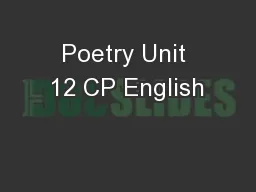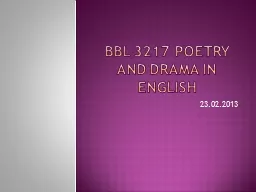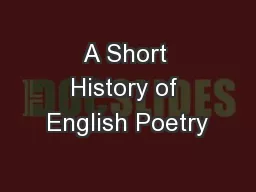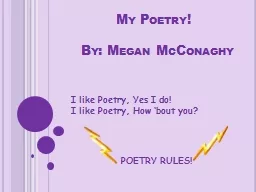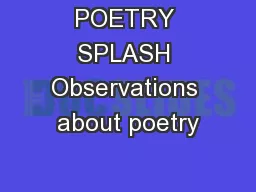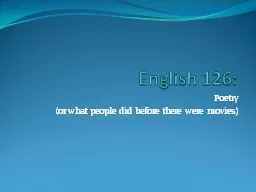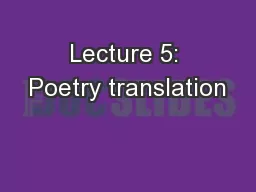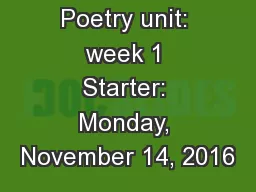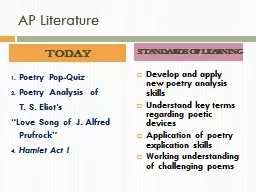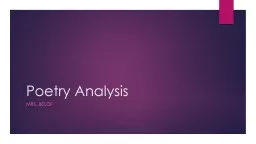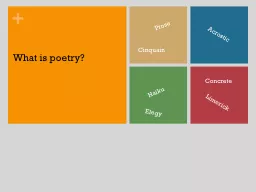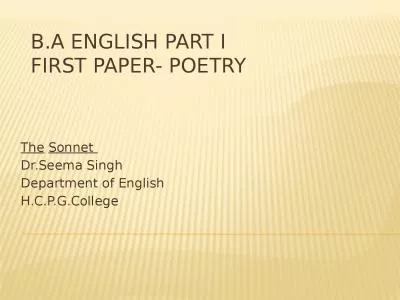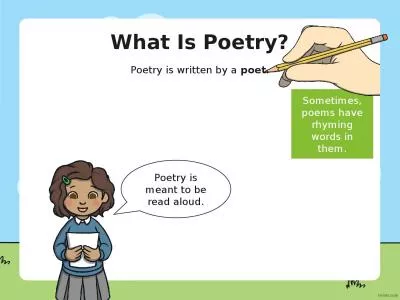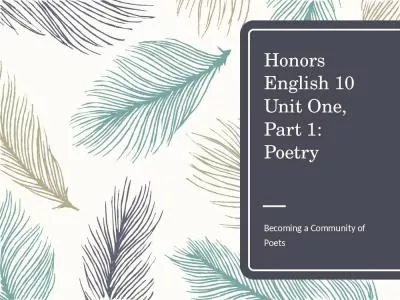PPT-Poetry Unit 12 CP English
Author : luanne-stotts | Published Date : 2018-10-06
Concepts to be Covered amp Assessed Form and Structure Diction and Word Choice Sound Devices Poetic Analysis Types of Poetry Learned Sonnet English Italian
Presentation Embed Code
Download Presentation
Download Presentation The PPT/PDF document "Poetry Unit 12 CP English" is the property of its rightful owner. Permission is granted to download and print the materials on this website for personal, non-commercial use only, and to display it on your personal computer provided you do not modify the materials and that you retain all copyright notices contained in the materials. By downloading content from our website, you accept the terms of this agreement.
Poetry Unit 12 CP English: Transcript
Download Rules Of Document
"Poetry Unit 12 CP English"The content belongs to its owner. You may download and print it for personal use, without modification, and keep all copyright notices. By downloading, you agree to these terms.
Related Documents

